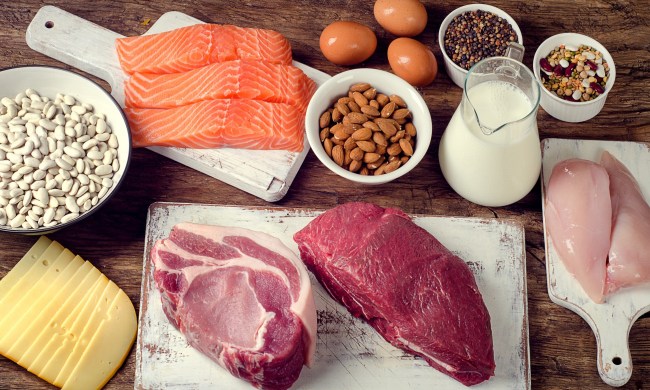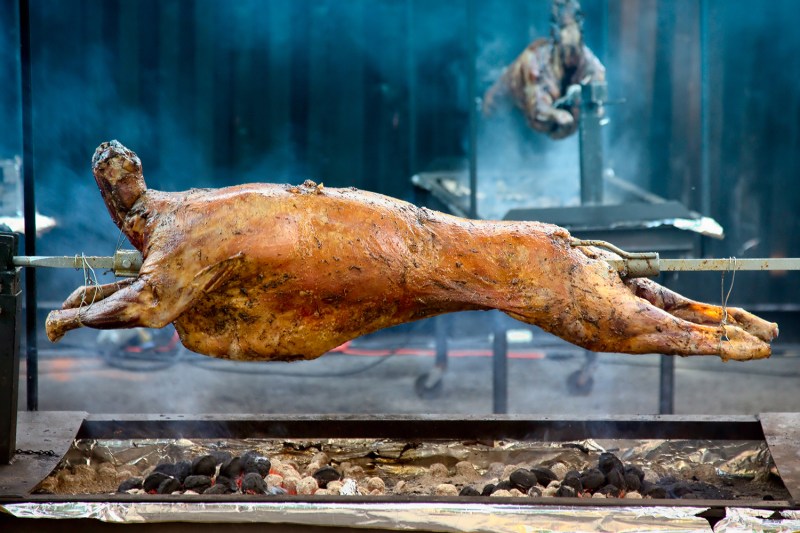
One of the best ways to cook meat is by an open fire, and there are several ways to accomplish this — a clean barbecue grill, a spit (also known as rotisserie), or even a campfire. There’s nothing better than cooking meat over an open flame, especially during warm days of summer when we’re often outside. The smoky flavor, the slight char, and the dripping fat all add to the roasted meat experience.
You can roast just about any meat outdoors, and by using many techniques. We’re going to be discussing how to spit roast whole lamb on an outdoor rotisserie. Here’s how to do it in five steps.
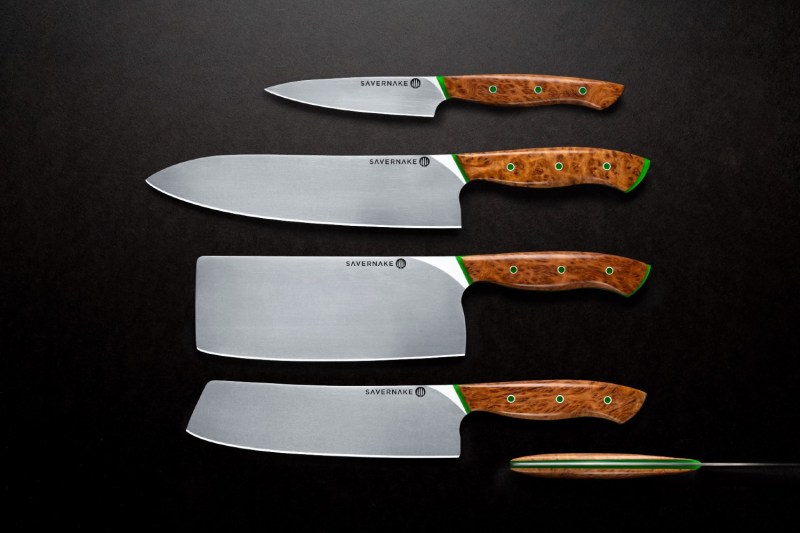
Prepare your mis en place
Mis en Place is the French phrase for “put in place” or “everything in its place.” What we’re talking about here is the entire process. You need to have the spit ready, the coals, the wood, the herbs and spices, any cutting tools, butcher’s twine and needle, and of course, the lamb.
The process to spit roast lamb is slow and long, so it’s better to have extra fuel — and by fuel, we mean the coals and natural chemically untreated wood for the fire.
For your remaining ingredients, you’ll be roasting an entire lamb, so make sure you have plenty of cooking oil, herbs, and spices on hand. Lamb goes great with garlic, rosemary, and lemons, but find a recipe that works for you. Now would be a good time to prepare your basting liquid as well.

Prepare the lamb
The lamb is going to be big and bulky, so you should have cleared some table space for it already and lined the area with butcher paper. Trim the lamb up by removing any noticeable silver skin. Take some of the oil, herbs, and spices and rub them all over the cavity of the lamb and then leave those aromatics in the cavity. Sew up the cavity using the butcher’s twine and needle.
Rub down the exterior of the lamb with more oil, herbs, and spices. Any meat you cook should start at room temperature, so it cooks evenly. The general rule of thumb is to let meat or poultry sit for 30 to 60 minutes. This is the perfect time to let the herbs and spices set into the lamb while you prepare the spit and the open fire.
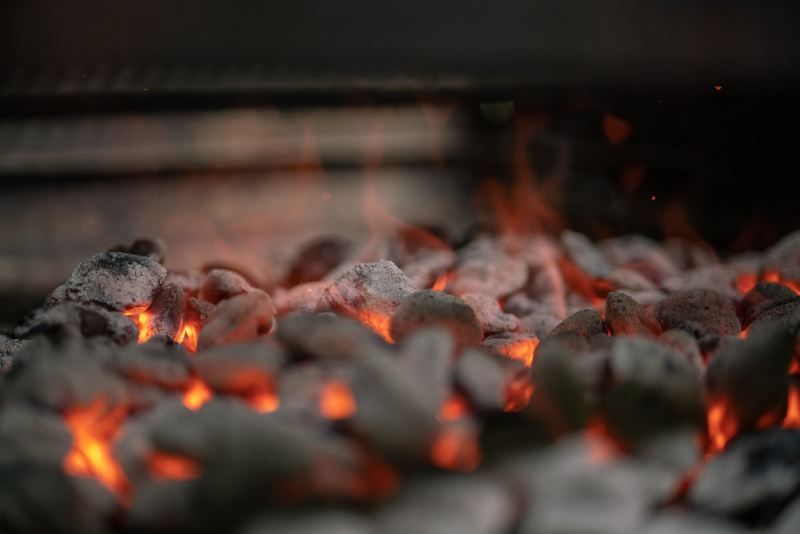
Prepare the fire
You should already have a spot lined out for your spit and where you’re going to be roasting the whole lamb. Now you want to make sure you get your coals going, whether you’re using charcoal, wood, or a combination of both. You need to have them ready to go with extra on hand so you can keep the fire going. Once you have the fire rolling, you can finish preparing the lamb by placing the rotisserie skewer through the lamb. You’ll also want to secure the lamb to the skewer so it doesn’t spin on the skewer as it rotates on the spit.
Once the skewer is in place and the lamb is secured, you can now place the lamb on the spit and begin the cooking process.
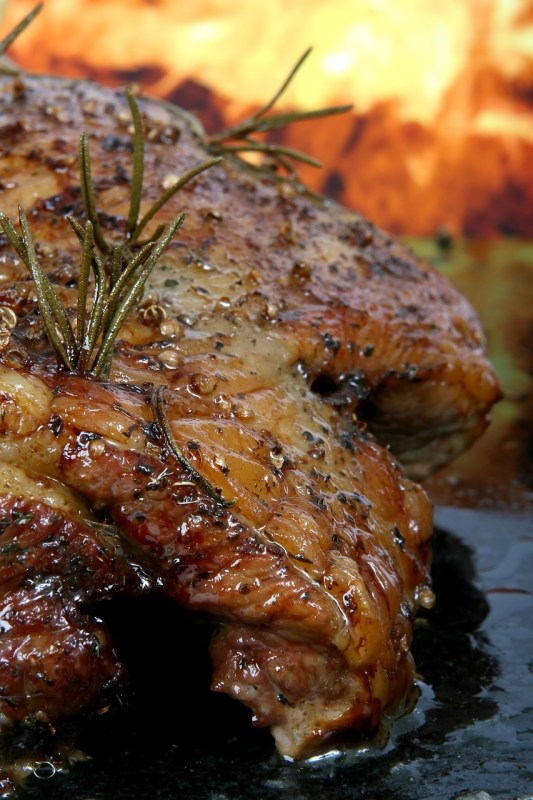
Baste the meat
As the lamb is roasting, you should baste it every 15 to 20 minutes, so it doesn’t dry out. The lamb will cook for roughly 4 to 5 hours depending on the size. You can expect a 25- to 30-pound lamb to be medium rare by that time, but it’s best to use a thermometer.
When using the thermometer, place it in the thickest parts of the lamb, which is the shoulder and the legs. When the temperature reaches 10 degrees below your desired temperature, you can remove the lamb from the coals and let it rest.
Lamb is best when the temperature is medium-rare to medium. You don’t want to go above that because otherwise; you risk the lamb meat being dried out and tough. The USDA recommends cooking lamb to a minimum temperature of 145 degrees Fahrenheit. This means you will remove the roasted lamb when the temperature reaches 135 degrees. If you want a medium temperature, then you will remove the lamb once the thermometer reaches 150 degrees Fahrenheit.
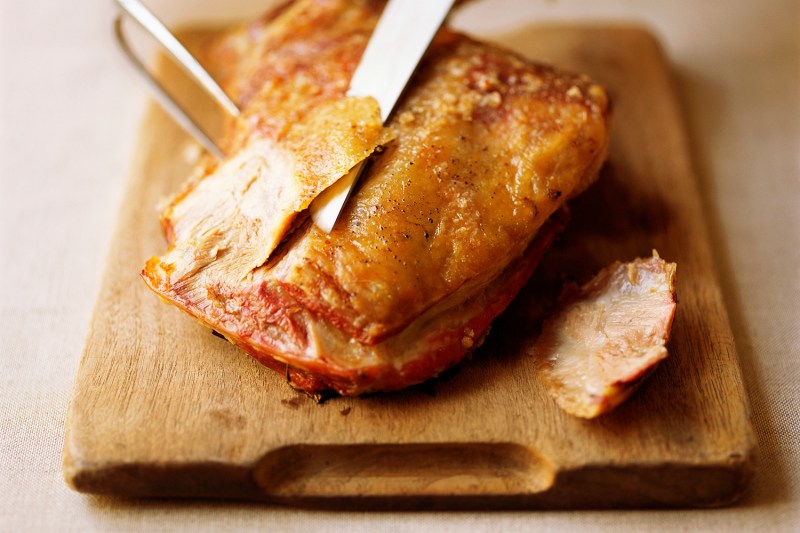
Rest, slice, and serve
When cooking meat or poultry, you should always rest them after cooking. Depending on the size of the meat you are cooking. A whole lamb should rest for about 15 minutes before cutting. Resting meat allows the juices to redistribute evenly back into the lamb. This will create a more flavorful and juicy product. You can tent the lamb while it is resting in order to keep heat from escaping during the resting period.
Once the lamb is rested, you can begin carving. Remember, when carving meat, always cut against the grain. Cutting against the grain reduces the gamey flavor and breaks up the muscle fiber, making the cut of meat more tender. Serve and enjoy!
Can you marinate a whole lamb before the spit roast process?

Yes, you absolutely can marinate a whole lamb before spit roasting it. Marinades allow flavors to penetrate deeper into the meat, resulting in a more flavorful and enjoyable final product. Also, the acids in marinades like lemon juice or vinegar help break down the muscle fibers, making the meat more tender and juicy. Marinades often contain oil, which helps keep the meat moist during the long cooking process of spit roasting.
If you plan to marinade your lamb before spit roasting it, here are some marinade ideas to jazz up your meal.
- Mediterranean: This is a classic combination of olive oil, lemon juice, garlic, rosemary, thyme, oregano, salt, and pepper. You can also add a touch of red wine vinegar or pomegranate molasses for depth.
- Greek yogurt: Marinate the lamb in yogurt mixed with lemon juice, garlic, mint, and dill. This tenderizes the meat and imparts a fresh, tangy flavor.
- Middle Eastern: Combine olive oil, cumin, coriander, paprika, turmeric, garlic, and a pinch of cayenne pepper for a warm and flavorful marinade.
- Chipotle honey: This is a sweet and smoky combination of honey, chipotle peppers in adobo sauce, lime juice, garlic, and cumin.
- Smoked paprika: Combine olive oil, smoked paprika, garlic powder, onion powder, cayenne pepper (optional), and salt for a smoky and slightly spicy taste.
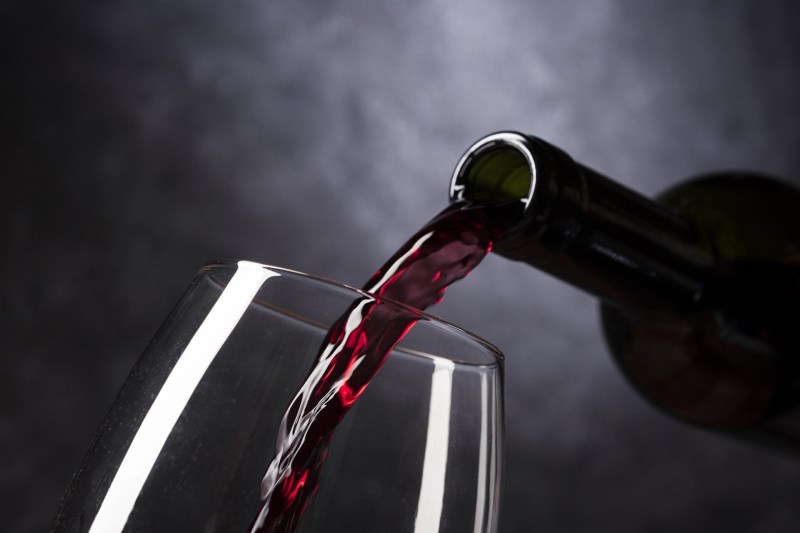
What to have with lamb
Lamb accompanies an entire host of great side dishes and drinkable liquids. Try this gamey meat with something sweet, like caramelized vegetables (think onion and carrot). Many love mint with lamb, but we are partial to a classic twice-baked potato, as the richness and robustness of the side can stand up to the weight of the lamb. Grilled asparagus is also a great route to take when eating lamb.
What to drink? Try a red with some character, like an earthy pinot noir or a syrah. A good cabernet or merlot can do the trick, too, with the weight of the wine working great with the meaty notes of the lamb. If you feel like trying something a little different, go with a Tuscan red blend. The good people of Florence have been pairing these classic reds with grilled meats for ages, and to excellent effect.

